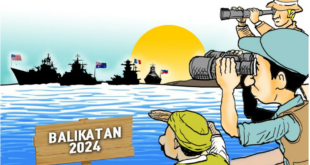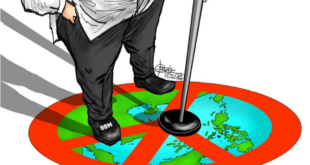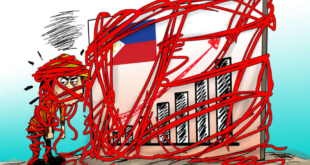
Clean air. That sounds like a concept, not a reality, today as air pollution continues to be a problem in the cities and urban areas, especially where traffic is a problem.
Air pollution is defined as a mix of hazardous substances from both human-made and natural sources. “Vehicle emissions, fuel oils, by-products of manufacturing and power generation, particularly coal-fueled power plants, and fumes from chemical production are the primary sources of human-made air pollution,” according to the National Institute of Environmental Health Sciences (NIEHS), a leader in air pollution research.
“Roughly about seven million people die each year due to air pollution globally. A third of the figure is actually in Asia. In the Philippines, that’s about a hundred people per 100,000 people die each year due to air pollution,” Manila Observatory scientist Maria Cambaliza said last week.
“In the Philippines, air pollution is the third highest risk factor driving death and disability due to non-communicable diseases (NCDs), and is also the leading environmental risk to health, the Centre for Research on Energy and Clean Air (CREA) said referring to a health metrics study in 2020.
Fighting air pollution does not only require data and laws to regulate its sources, it also needs reliable measurement standards to forecast and measure the pollutants in the air. This is what a project of the National Aeronautics and Space Administration (NASA), now ongoing in the country, aims to improve. Named the Airborne and Satellite Investigation of Asian Air Quality (ASIA-AQ) project, it is held in collaboration with governments in the region with the highest death rates linked to air pollution. The Department of Environment and Natural Resources (DENR) is collaborating with the US agency in this project.
The NASA DC-8 airborne science laboratory, the biggest flying lab, has flown twice so far, for eight hours, over some of the most densely populated areas of the country, according to reports. A smaller NASA Gulfstream jet whose instruments can create three-dimensional maps of pollutants in the air which has flown with the DC-8 flying lab, will swoop up air particles to be studied.
The readings from the flying lab can improve the interpretation of data and lead to more accurate models to forecast air quality which is now only relying on ground stations and satellites.
Combining the air, space, and ground readings is necessary for policies “regarding public health, regarding industrial compliance, regarding… ecosystem preservation and conservation,” said DENR Secretary Maria Antonia Yulo-Loyzaga.
Through the joint effort, the Philippines can gain access to advanced air quality monitoring techniques, including satellite data and analysis, ground-based observations that are enhanced, and atmospheric modelling tools. The information about air quality can help government, especially local government officials, to develop intervention programs to address air pollution hotspots, the DENR Secretary said.
The collaboration can also guide stronger government policies and strengthen the implementation of laws and ordinances related to air pollution. Perhaps the findings of the Asia-AQ project will require legislators to revisit the Clean Air Act of 1999 (Republic Act 8749). One of its measures related to the regulation of air emissions has a very significant impact on the health of Filipinos who commute daily amid the worsening traffic situation.
In an interview, the Manila Observatory scientist said traffic causes at least 60 percent of air pollution.
ASIA-AQ involves experts from NASA, the Philippines’ DENR, South Korea’s National Institute of Environmental Research (NIER), Universiti Kebangsaan Malaysia (UKM), and Thailand’s Geo-Informatics and Space Technology Development Agency (GISTDA). It aims to improve the measurement and forecasting of air pollution in the most populous region of the world.
We trust that government will mobilize the needed resources to ensure improved quality of air for the benefit of a healthier and more productive citizenry.
*****
Credit belongs to: www.mb.com.ph
 Atin Ito First Filipino Community Newspaper in Ontario
Atin Ito First Filipino Community Newspaper in Ontario






